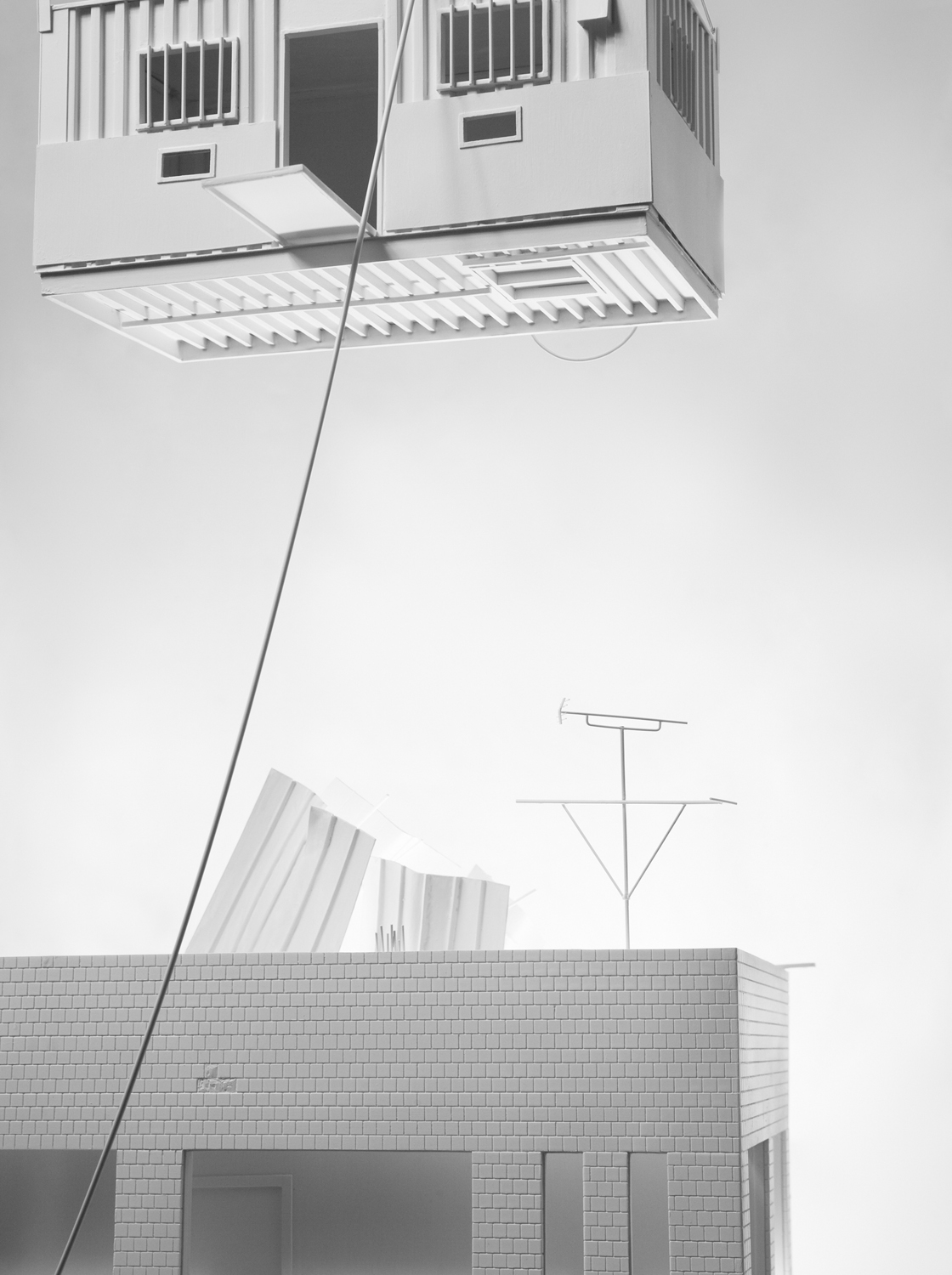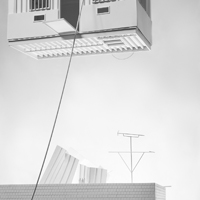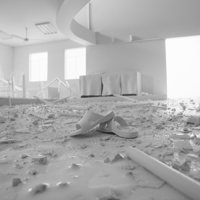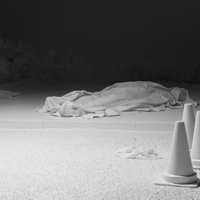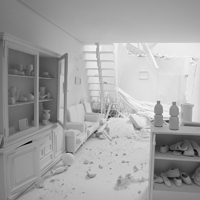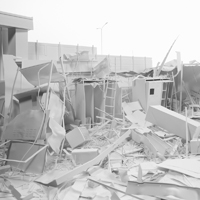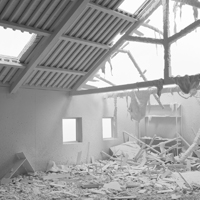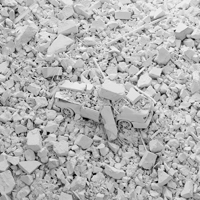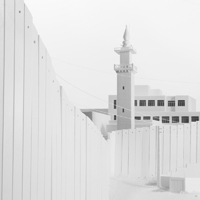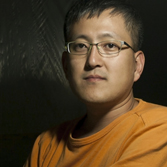
Ha Tae-Bum, Total Museum of Art
Birth
1974, Seoul
Genre
Sculpture, Installation, Photography
Homepage
Ha Tae-Bum_1
Many images on the news on various media such as the Internet and TV deal with events, incidents, and the countermeasures. On top of such images, photographic images of war and disaster are added, making the contemporaries know events that they should not know or be affected directly and indirectly by the reality in which they are situated. The images that deal with special circumstances that differ from ordinary life possess their own components that can persuade audiences on a global level. At the same time, they also reveal the characteristics of certain region, time, nationality, ethnicity around specific incidents. Such photographs are images that can shock their viewers, yet they are ‘meaningless’ images to those who are not related to such incidents. Ha Tae-Bum develops his work by appropriating images that convey such reality.
Ha’s work did not start from images discovered via media. As Ha mentions in his artist’s note, he tried to express the momentary scenes he encounters in his daily life and the experiences he goes through from such encounters. His 2007 series 'Ich sehe was, was du nicht siehst' is a major example through which he conveys his view towards the external world while addressing concerns about his inner world. He realizes that the images provided by media are scenes of other ordinary lives that one can indirectly experience while they are visually shocking. He is surprised by himself who is indifferent, insensitive, and unsympathetic to them.
Thus, the artist has come to present the WHITE series from 2008 where he makes every object white, attempting to scrape images and objectify their meaning. In specific, he produced subjects of his photography and sculptural works in the form of paper model that barely present material using thin paper. As the critic Lee Eun-joo notes, they do not intend to draw any kind of reality from an image as ‘an external symbol.’ As soon as the viewers recognize it, images draw a sense of futility that is tactile, perceptual, and visual.
Ha’s criteria of selecting images are thus not from the content of events and incidents but from how he can express the space within the images through his photography and sculpture. After the selecting process, the artist eliminates unnecessary elements from the original images and recreates them as images that are optimized for his work. Since what matters is how he can identically present the impression of the space in the images and they are images that rely upon his figurative thinking, whether there are human figures in his work or not does not matter. Ha produces a new kind of typecasted images by using sampled images that are manufactured by the mass media. In other words, new images emerge as the original images as their social, political, historical, and local conditions as well as their tragic qualities are removed and recreated. As a result, Ha’s work goes beyond the superficial meanings such as the tragedy of the war and damage from a disaster. His work symbolizes the absence of meaning, the dispossession of periodical division, the oblivion of the cause, and furthermore, the death by the absence of life.
Regardless of different strategies that artists take for the sake of differentiating their work from the others’ creations by exercising their unique creativity, the reality that the artists face is similar. Since the source of their work is similar, it is possible that the results show a similar trend. A style from certain period is produced as trends are concentrated in a specific period. In this sense, there are many artists that are influenced by images produced by the press. Among them, Ha Tae-Bum is an artist that does not insist on working in a singular genre but create works in diverse genres including installation, sculpture, photography, animation, performance, etc. Though there is an occasional emphasis on the playful aspect of his work from his paper model pieces and the fact that he employs different genres, Ha shows that the departure point of his work is only from within himself. The models he creates are presented through fragments, stressing the trace of his hands. In addition, the white space where one cannot feel the sense of space, color, and atmosphere gives a surreal sentiment than the reality of images, which leads to the conclusion that the artistic imagination is a matter of gravity in Ha’s work.
As he realized the role of an artist as a creator, the artist changes his ideas on humans that are both contributors and victims of wars and disasters, which are the source of his work. Hence, different from his previous works, the performances titled 'Dance on the City' and 'Playing war Games' involve direct intervention, candidly showing the process of war and destruction as an enormous play and the human instinct and pleasure that come from such process. While Ha’s perspective has been directed towards the external world for a certain period, he now shows a turning point where humans are directly involved in his work. By generating situations where life intervenes his works that have previously been filled with inanimate objects, the artist draws new experience and interpretation. From this point, it would be fruitful to review Ha’s work and anticipate what will come next.
Ryu, Ji-Yeon (Curator of National Museum of Modern and Contemporary Art, Korea)
Ha Tae-Bum_2
At first glance, Ha Tae-Bum’s white landscapes, with their coats of settled white dust or snow and their crumbling corners, seem like ancient historic sites or romantic ruins. But for the most part, Ha’s scenes show actual catastrophes wrought by deliberate violence—the aftermath of terrorism in Pakistan, Norway, or New York; the site of a devastating fire in Seoul’s Yongsan district; the results of an artillery attack on Yeonpyeong Island in northwestern South Korea. These landscapes also include sites that are soon to disappear, such as flophouse villages and the Changsin redevelopment zone in Seoul—in other words, places where disaster or violence has become an everyday occurrence. These scenes of mass or total destruction emerged from incidents reported in the newspaper, on the Internet, or in other media sources. Most of the photographs show actual calamities, but the artist himself did not take the original pictures. Ha seeks to emphasize the perspective on the incident, rather than the incident itself. For example, the works in his ‘Imagination’ series do not allow the viewer to take in the entire incident with a single glance. These differ from his ‘Actuality’ series, where he reproduces scenes of incidents that he himself has created in everyday settings where accidents can occur, like a kitchen or an office. This series emanates a sense of tranquility combined with tension, since the viewer has to look very closely to spot the potential hazard in every scene. Here, Ha is speaking to the ubiquity of violence, its routine nature. Whether we openly admit it or not, accidents do not simply visit us. This is especially true for episodes whose meaning can completely change depending on the perspective and interpretation, such as a news photograph depicting a clash of interest and power between groups. Ha produces multiple levels of analysis for these instances by a process of secondary interpretation in which he reproduces news photographs as tertiary miniature models, which are then also photographed.
This is not simply a matter of parallel movement from surface to surface, as in Photoshop processing. His final products are digital prints of white landscapes, where the whole image has been color-tuned to the same tone. But the work involves a long manual process that demands patience and technique. One notable variation between the models and the original photos is that all of the figures are removed, bringing the setting to the fore. The white surfaces, reminiscent of plaster casts, acquire a vivid sense of texture and shadow that would otherwise not be visible. So careful is this process that the artist sometimes exhibits the aesthetic approach of surrendering himself to the details of the surfaces, while setting the core meaning of the incident aside in parentheses. The knowledge that most of the figures that Ha removes from the pictures are either dead or fatally wounded indicates another aspect of these scenes of colliding forces. The absent bodies represent an unconscious dimension of the incident outside the foreground. During Ha’s modeling process, he alters the scale and color of the setting and removes the people, thereby emphasizing the public’s insensibility towards these disasters. Meanwhile, Ha’s video installation pieces, where paper weapons or model paper cities are trampled by a dancer, refer to tragic incidents that are consumed as casually as a sheet of paper. In today’s world, it seems that indiscriminate destruction is little more than a game or a dance. In the modern era, the world is constantly being compressed through globalization, and conflicts and contradictions frequently erupt between nations and societies. Thus, without any thought, the public consumes incidents with clear societal causes as just so much spectacle. And the violence is repeated and reproduced by the media’s distortion of the incident and the perspective of the bystander, who is little more than a consumer of spectacle.
Lee Sun-Young(Art Critic)
Dance on the City
White buildings made of paper are thickly placed on the floor and we could watch the legs of dancer from far away. And simultaneously with start of music, the dancer dances by stirring and trampling down the buildings made of paper as much as she pleases. As dance rhythm gets gradually faster and intensified and finally arrives at its finale through climax, the buildings demonstrated on the floor were destroyed as if they were swept away by something and this process is directed like a photography scene represented by artist in his photography so far.
In this scene, we could observe an attempt of an epic plot and theatricality represented in the works as well as specific memory and appreciation of the artist. While a screen is completed by its sense of space and development process as well as targets, the artist brought forth such screen as components of the works by sensing viewpoints of the audiences at the same time.
Our images that encounter a scene of incident shown by media are divided into two ways. It may be critically important information for a person who actually experiences damages on the scene but otherwise, it may end up as a mere idle looking-on just like watching a scene of drama or film. As any scenes exposed to us are transmitted in real time in an incredibly fast pace and repeated beyond count and finally, such images are consumed to the point where watchers eventually become insensible even in recognizing whether such scene is fiction or reality. In other words, while we encounter reality through an intermediate media, we may be obsessed by a negligible attitude as if we are watching drama or film. Ha Tae-Bum, the artist, exposes perceptional and cognizant attitude of contemporaries who used to consume such images indiscriminately like this through sensibility just as playing a game within the boundary of social structural problem and expresses it metaphorically.
This is also a story about catharsis being acquired by the audiences as well as the artist concerned who watches such images in a diversified way. This plot motivates the audiences to experience the fact that current reality, imminent issue and the way of observing and responding to it are not constant or unique and other way of observing and alternative way of responding are present all the time. Above image works shows order and process of a certain phenomenon and provides imagination so that contents are made to tell a story by its own accord. Resultantly, spatial area where one may play a game is made to be broadened further.
Kim, Sunil(Curator)






